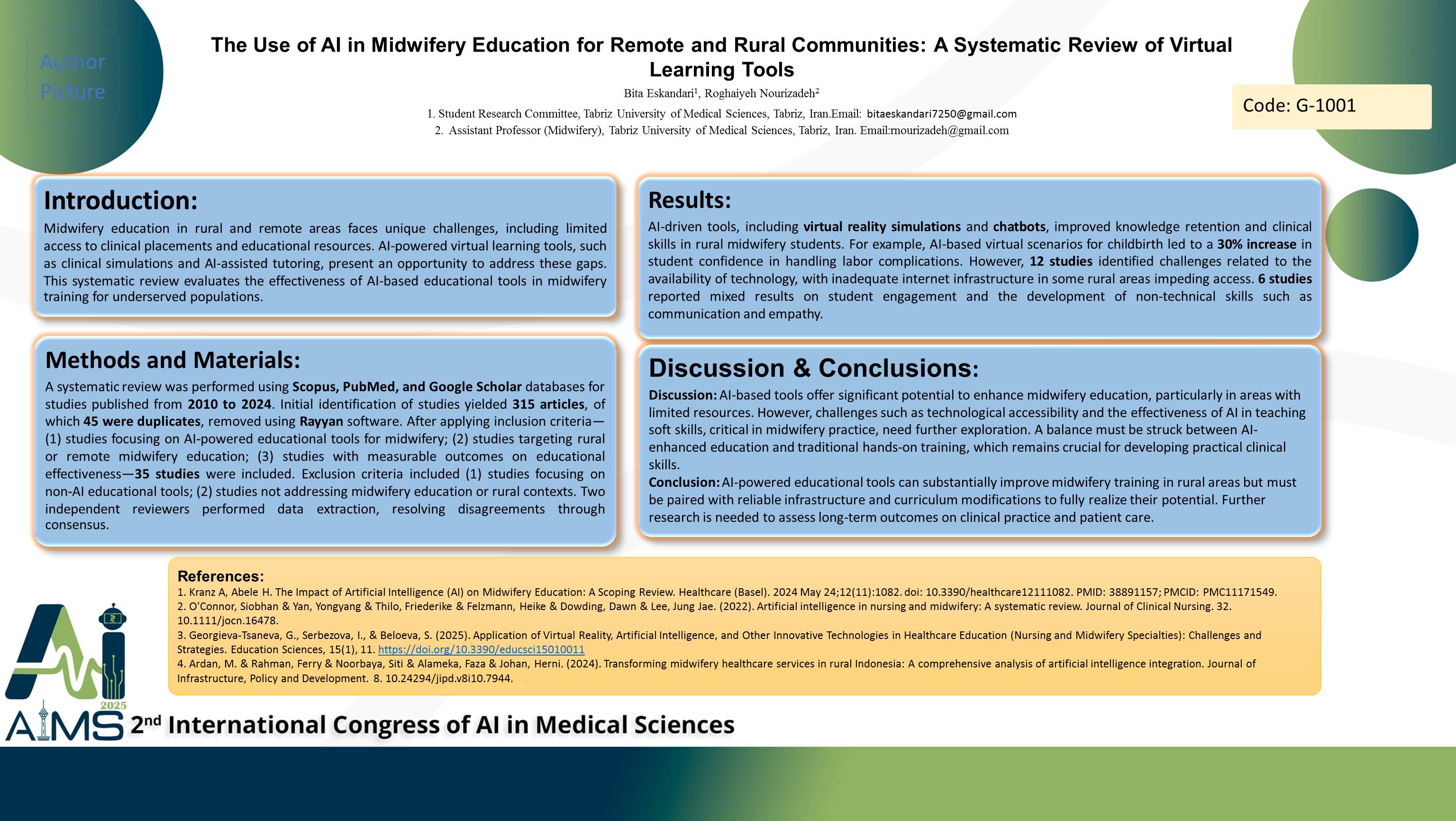استفاده از هوش مصنوعی در آموزش مامایی برای جوامع از راه دور و روستایی: بررسی سیستماتیک ابزارهای یادگیری مجازی
کد: G-1869
نویسندگان: Bita Eskandari * ℗, Roghaiyeh Nourizadeh
زمان بندی: زمان بندی نشده!
برچسب: سیستم های تصمیم یار بالینی
دانلود: دانلود پوستر
خلاصه مقاله:
خلاصه مقاله
Background: Midwifery education in rural and remote areas faces unique challenges, including limited access to clinical placements and educational resources. AI-powered virtual learning tools, such as clinical simulations and AI-assisted tutoring, present an opportunity to address these gaps. This systematic review evaluates the effectiveness of AI-based educational tools in midwifery training for underserved populations. Method: A systematic review was performed using Scopus, PubMed, and Google Scholar databases for studies published from 2010 to 2024. Initial identification of studies yielded 315 articles, of which 45 were duplicates, removed using Rayyan software. After applying inclusion criteria—(1) studies focusing on AI-powered educational tools for midwifery; (2) studies targeting rural or remote midwifery education; (3) studies with measurable outcomes on educational effectiveness—35 studies were included. Exclusion criteria included (1) studies focusing on non-AI educational tools; (2) studies not addressing midwifery education or rural contexts. Two independent reviewers performed data extraction, resolving disagreements through consensus. Results: AI-driven tools, including virtual reality simulations and chatbots, improved knowledge retention and clinical skills in rural midwifery students. For example, AI-based virtual scenarios for childbirth led to a 30% increase in student confidence in handling labor complications. However, 12 studies identified challenges related to the availability of technology, with inadequate internet infrastructure in some rural areas impeding access. 6 studies reported mixed results on student engagement and the development of non-technical skills such as communication and empathy. Discussion: AI-based tools offer significant potential to enhance midwifery education, particularly in areas with limited resources. However, challenges such as technological accessibility and the effectiveness of AI in teaching soft skills, critical in midwifery practice, need further exploration. A balance must be struck between AI-enhanced education and traditional hands-on training, which remains crucial for developing practical clinical skills. Conclusion: AI-powered educational tools can substantially improve midwifery training in rural areas but must be paired with reliable infrastructure and curriculum modifications to fully realize their potential. Further research is needed to assess long-term outcomes on clinical practice and patient care.
کلمات کلیدی
Artificial Intelligence, Midwifery pregnancy, Virtual Learning
